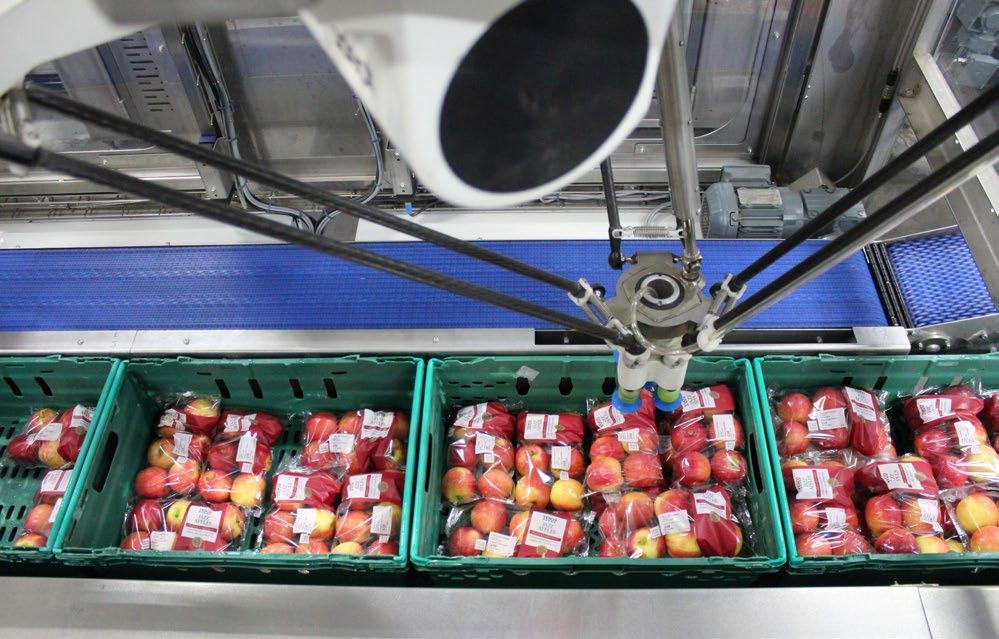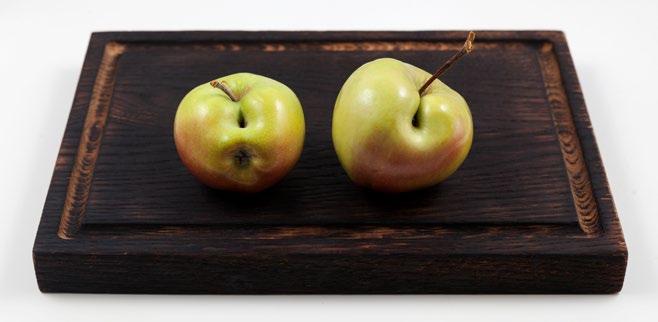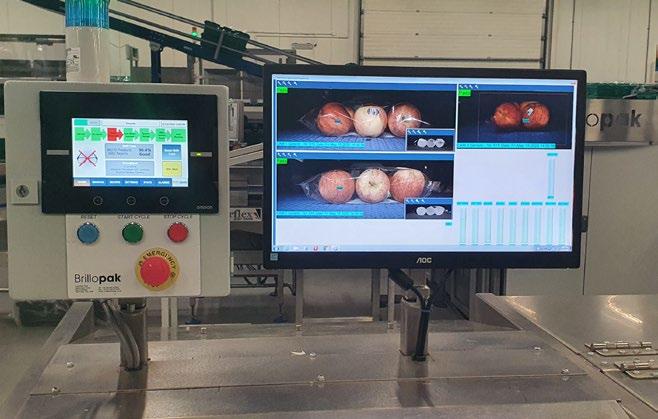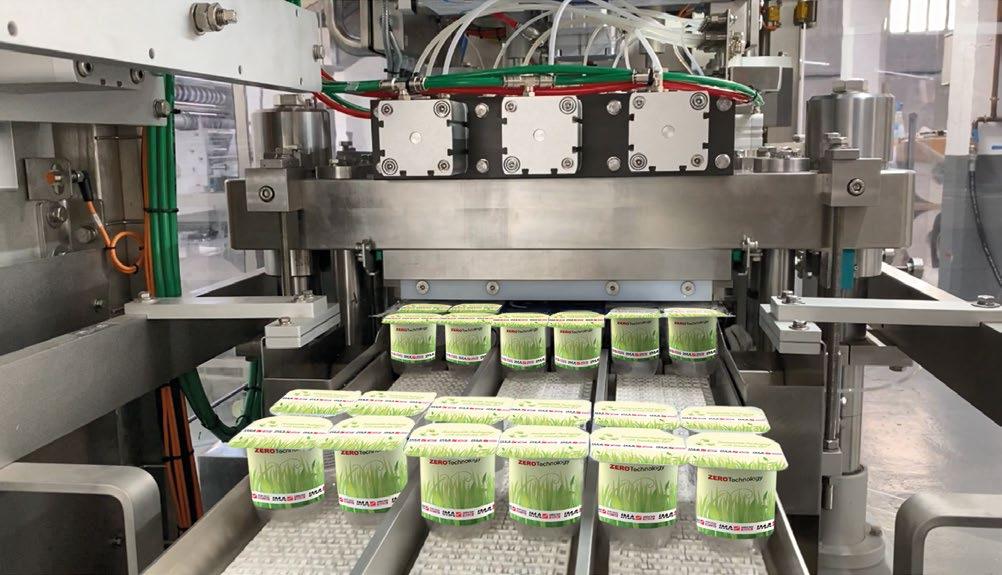
6 minute read
BRILLOPAK
Hyperspectral imaging: the stuff of science coming to an automated food line near you
Vision can be deployed in a number of different ways on a food processing line to tell if food is safe to eat and meets the quality standards demanded by retailers. Now the kind of hyperspectral technology that NASA has used to study planets and plant life is being applied to the food that ends up on household plates.
For UK-based automation specialist Brillopak, the emergence of more affordable hyperspectral imaging is enabling food packing plants to leverage sci-fi kit and apply to daily operations. In addition to offering a critical quality control advantage, it helps packhouses previously reliant on EU migrant workers and experiencing staffing pressures to now automate their quality inspection process. Historically, quality assurance in packhouses relied extensively on human intervention - someone scanning conveyors as packs headed towards the case loading operation and spotting and removing defective or damaged product. However, there are obvious limitations to visual screening. Most notably, the human eye lacks Superman’s x-ray powers, while conventional cameras only see what is in the visible light spectrum.
Workforce fatigue and human error has meant that on super-fast packing lines, even visible defects, such as bruising and blemishes, can pass even the most observant human inspectors by. Today’s hyperspectral vision systems are programmed to have a level of impartiality that human eyes just don’t have.
With many end-of-line packing stations now automated and processing in excess of 100 packs of produce a minute, incorporating vision is becoming increasingly commonplace. To help minimise the risk of an ‘out-of-spec’ product heading out of the warehouse doors and onto retailer’s shelves, Brillopak has begun to integrate hyperspectral imaging as an option onto its automated case loading systems,
FOOD SAFETY OF THE FUTURE
Providing instant results and capable of analysing an entire line of packed produce, a hyperspectral camera can be positioned at any part of the food production process. Yet, Brillopak utilises this AI technology predominantly between the packing and case loading operation where operatives previously inspected and rejected produce packs based upon sensory evaluations - sight, touch and smell.
In addition to checking the quality of produce being packed, the use of hyperspectral imaging can detect multiple anomalies with greater precision and speed. This includes appraising the colour, position, count, labels, packaging condition, print inspection, position detection (2D/3D), barcode / data code reading.
For cooked items, like bread rolls, a change in colour may indicate burnt areas. Change in size may indicate that a partial product, for example an apple sliced in half, has been inserted into a pack during the wrapping process. On beverage lines, it may identify partial filling. Cameras can also check the presence of labels, including verifying critical data such as date codes, and spot where food or debris may have become trapped, affecting the closure of packaging. Advanced applications can even detect the chemical compositions of produce to accurately determine ripeness and the shelf life. Some producers already use it to check the pH level and tenderness of meat, such as beef.
For Brillopak customers, however, the ability to improve the accuracy of how products are picked and presented to the packing robot at speed is where director David Jahn sees immediate tangible advantages. He explains: “Using these cameras we can find the centre and orientation of products. This information is conveyed to the robot, which accurately responds, adjusting its speed and position to pick up the pack, regardless of its location on the conveyor. The result is fewer line stoppages to address bottlenecks and better presentation in the retail crates.”
In its simplest form, the technology works by analysing how light is reflected across the electromagnetic spectrum. The camera generates a digital image containing far more colour for each pixel than a traditional vision system, or the human eye, which is limited to three primary colours. This ability to differentiate between similar coloured objects means that factories would now be able to spot minor blemishes, such as a small bruise on an apple.
The exact vision technology deployed by Brillopak will depend on the application, continues David. “We might use a camera to select and reject products that don’t meet the quality criteria with regards to colour, size or count. Alternatively, vision might be used to sort multiple products as they move randomly down a conveyor in preparation for the next process. Critically, packs that don’t comply with labelling laws will also be rejected before the case loading process.”
By 2024, the hyperspectral imaging systems market will be worth an estimated US$18.88 bn.i Although still a relatively small adopter of the technology, food processing and agriculture are expected to benefit significantly from advancements micro-hyperspectral imaging camera technology.
“With food safety, quality assurance and food waste so high on the agenda, we anticipate that hyperspectral imaging will soon become the go-to vision system on food processing lines in the future,” adds David.


Customers wanting a demo of vision technology can visit Brillopak’s new trial centre in Tonbridge, Kent. To book a visit, email info@brillopak.co.uk FDPP - www.fdpp.co.uk 67

Tailor made solutions for the dairy and food industries
From hygienic product protection to communication with the customer - packaging must fulfil a wide range of functions. This includes the packaging design, product protection, ease of use, optimal logistics, customer information and brand ambassador, but also to guarantee the shelf life of the product, however the packaging must also be sustainable. Functionality and sustainability are on the same level in packaging development. This has to be taken into consideration when developing alternative packaging concepts with sustainable materials such as monomaterials as well as materials from renewable resources.
With the patented ZERO Technology tools we offer the perfect solution for the use of mono-materials such as PET, PP and PLA. The tools from the ZERO Technoloy range are the result of years of research and development. They can be applied to all cutting applications contained in an FFS machine. Their use reduces maintenance costs, increases the performance of the machine and have a longer punching time. By using the tools from ZERO Technology, a quick switch from PS (polysterene) to more recyclable materials such as PET, PP and PLA can be realised and customers have now the opportunity to use these materials for their thermoformed cups.

Cutting tool
Only with the new, patented punching tools from INTECMA can multipacks made of these materials be broken into individual cups just as easily as multipacks made from PS. The knives do not even have to be changed for this. Further equipment in the ZERO Technology range include special pre-heating plates, which can be easily dismantled and enable simple maintenance. Further material savings can also be realised by using the special thermoforming moulds, which enable the use of thinner materials.
ZERO Technology offers an innovative solution on the way implementing more sustainable packaging material in existing form, fill and seal machines from our brands Erca, Hassia and Intecma (and even in machines from other suppliers) or in new machines and enables improved recyclability of cups and reduces the ecological impact.










